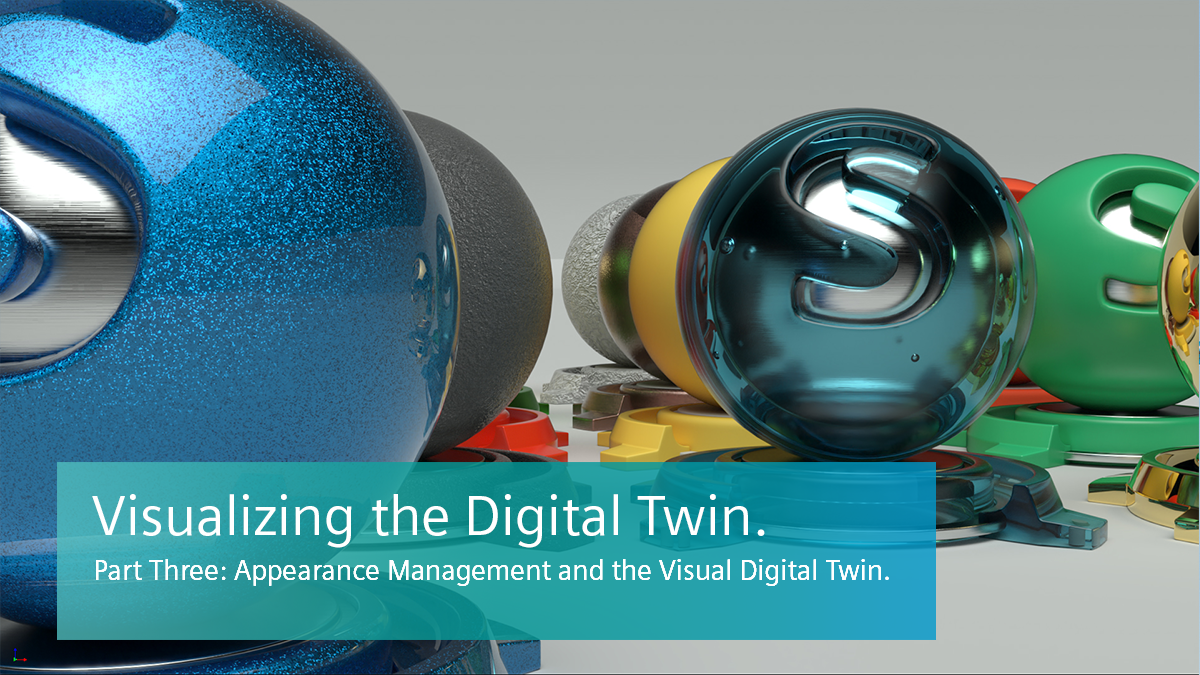Appearance Management and the Visual Digital Twin

The desire to experience the digital twin in visually rich 3D across the lifecycle is rapidly becoming the expectation. The need to have that data available to designers, manufacturing, sales and marketing, and after sales and servicing from a single source of truth is clear. Moreover, businesses are ready and willing to invest in processes to define their Visual Digital Twin as a key component of the comprehensive digital twin.
The digital twin userbase is growing rapidly and making the move from 2D to 3D is unavoidable. Many of those users, especially in engineering, have been happy with basic CAD colour fidelity for their 3D, reserving high quality visualization for specific tasks. But this too is changing, the availability of high quality graphics at the consumer level and on almost any device or media leaves us asking, why can’t we always experience our digital twin in full visual quality.
There are two capabilities we must think about as we try to solve this problem.
- Have a visual description of the product appearance that can be used and available to the range of displays and form factors that will visualize product data, correctly applied to the product shapes.
- Have a way to associate visual appearance with product data that can survive across the full lifecycle and be accessible by as wide a range of consumers as possible.
Together, these would provide the foundation to start building out a range of workflows across the lifecycle. We know that users, including the end consumer of the product, want to experience the digital twin in a variety of ways and form factors from desktop to future XR interactions so, we must be flexible in our approach.
Flexible visualization
Let’s start by thinking about the first capability, how can we ensure that our products and designs look visually consistent wherever they are seen? This is something that has eluded the industry until recent times.
Looking back, most of the advanced visualization systems in the 90s and 2000s had their own shading descriptions and visual materials typically closely tied to the underlying graphics technology. This typically made translation between systems problematic and is still somewhat true today. However, there has been a big shift towards mainstream Physically Based Rendering.
Physically Based Rendering is a computer graphics technique to simulate as closely as possible the visual appearance of objects as they appear in the real world. This is done through a combination of physically based materials and lighting with a key observation of the preservation of energy, which older techniques would typically break.

The leading game engines and a range of vendors and formats have moved towards a somewhat standard approach based on original work driven by Pixar, which has opened the doors not only for each platform to gain their own consistency, but also to enable interop between platforms, which opens up a whole range of possibilities.
Here at Siemens Digital Industries, we have just finished developing our new Siemens Visual Material (SVM), which is our take on a standard physically based visual material that will enable sharing consistent visual representations across current and future Siemens applications. We will start to introduce this in Siemens NX in the very near future.
Tightly integrated visual appearance
Now that we have a visual material we can share across the lifecycle, how can we associate it with our product data? Many businesses already maintain a library of visual materials, often defined by product series, season, year or region that can be referenced by unique ID or name. However, most only connect the visual material to the product data at the end of the design process or for specific workflows. That means the engineering data has already gone to the sales and marketing teams for example and has likely been disconnected from the PLM workflow. Visualization teams within sales and marketing typically modify, simplify and manipulate product data to make it more accessible to their media endpoints, but this means they are working in an unmanaged workflow.
The pity in this, is that all of the amazing creative work done by the visualization teams can’t be consumed by any of the upstream workflows. Wouldn’t it be amazing to connect the visual data to the product at an early stage so that it can survive the entire lifecycle, that visual variant information could relate to the full product configuration at any stage with fully configured product data and visual configurations drawn directly from the Digital Twin.
Of course, products are much more complicated than a simple visual material assignment. The final result requires that final look, but there may have been a range of manufacturing processes on the way to the final appearance. Manufacturing processes can add small surface scratches, or real impressions such as knurling which clearly deform the surface. Consider car paint, where many coats are applied with a final clearcoat. Then we have ranges of paints and plastic coatings, often in multiple layers, each of which are subsequently layered on the base material.
Typically, a lot of this information, along with other PMI information, is used to drive simulation such as mass properties or manufacturing processes. But what if we could use these aspects of the digital twin to inform the visual appearance, not only the final, but each stage of the process towards that final appearance. One of the big push backs I hear around assignment of visual materials is ‘who is going to do that’, but in an ideal world, what if we could automatically assign a large majority of the visual appearance using information we already have in our digital twin, leaving the final customer facing choices to be accurately applied and assigned to match the final appearance of the product.

This capability will gain importance as more businesses offer highly customizable products to their customers. From my discussions across multiple markets from fashion and footwear to automotive and heavy industry, businesses are highly interested in the direction of this capability. Presenting aesthetic matches through design and engineering and then on to end customers will have a dramatic effect on the design to purchase journey for many companies.
This is a strong direction for us here at Siemens and we have been working towards new product technologies for Appearance Management across Siemens NX, Teamcenter and Teamcenter Configurator that put in place the fundamentals for driving managed visual appearance across the lifecycle. To me, this seems like the next big step towards building the Visual Digital Twin into our mainstream engineering processes and wider lifecycle. With such a renewed focus on visualization in the market, now is a great time to review your business process and start driving more visual fidelity into your digital twin.


